Philips 46PFL9704H 46in LED Backlit LCD TV Review
Philips 46PFL9704H 46in LED Backlit LCD TV
We reckon it's one of the best TVs out there.
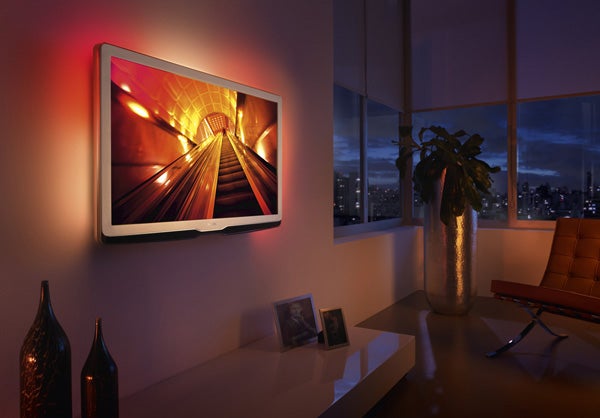
Verdict
Key Specifications
- Review Price: £2299.99
If ever a TV seemed built from the ground up to catch any keen TV buyer’s eye, it’s the Philips 46PFL9704H. First – and for me, tragically, most interesting – there’s the fact that it’s the first 46in TV we’ve ever seen from Philips. In the past, the brand has preferred the 47in size, so the 46in switch suggests a move to a different panel source. Which is, of course, fascinating.
Probably more immediately eye-catching – or perhaps eye-watering would be a better description! – to ‘normal’ folk, though, will be the 46PFL9704H’s stiff £2,230 price tag. This makes it more than twice as expensive as some 46in and even 50in TVs we’ve come across.
A more positive show-stopper is the 46PFL9704H’s use of direct LED backlighting, with the final bit of attention grabbing coming courtesy of the 46PFL9704H’s design. The TV positively shimmers with opulent excess, thanks to its brushed aluminium finish, slender, clean lines and high-gloss outer edge. And that’s without mentioning its rather fancy touch-sensitive control buttons down one side, and its ‘three-way’ incarnation of Philips’ unique Ambilight system.
Most people will likely already be aware of Ambilight, but briefly for those of you who aren’t, it involves a series of LED lamps set into the TV’s rear sides firing out light that can colour match the content of the image you’re watching. In fact, the latest Ambilight system colour matches the picture with uncanny accuracy in terms of both colour tone and the physical location on the bezel of a specific colour in relation to where that colour appears in the picture. The ‘three-way’ nature of the 46PFL9704H’s Ambilight, moreover, means you get coloured light spilling from along the TV’s top edge as well as the more common left and right sides – a fact which really improves the feature’s immersive capabilities on a screen as large as this one.
Although it’s the exuberant front end that will monopolise your attentions and affections, the 46PFL9704H’s rear is actually every bit as attractive in its own high-tech way. For a start, it boasts an outstanding five HDMI inputs – one more than the vast majority of rivals can muster, and more than enough to cope with the most extravagant of AV systems.
Even more important, arguably, are the set’s USB (capable of playing almost every file format we can think of from USB storage devices) and Ethernet ports. As well as allowing you to stream in files from a DLNA PC, the Ethernet port lets you access not just Philips’ impressively wide-ranging ‘ring-fenced’ online service (see our review of the 32PFL9604 for more details on this), but the World Wide Web at large via a rather basic but certainly functional built-in browser.
Given the cutting edge impression the 46PFL9704H has created so far, of course, it seems a bit clunky to depend on an Ethernet port for the TV’s online capabilities. So it comes as no surprise to find that the 46PFL9704H also carries built-in Wi-Fi support, without any need for an optional dongle of the sort most rival brands insist you use to make their TVs Wi-Fi ready.
All this and we’ve still barely scratched the surface of everything the 46PFL9704H has to offer. So let’s move swiftly into its Perfect Pixel HD processing system – a frighteningly powerful and comprehensive engine that I believe delivers the most profound impact to picture quality of any picture engine around today.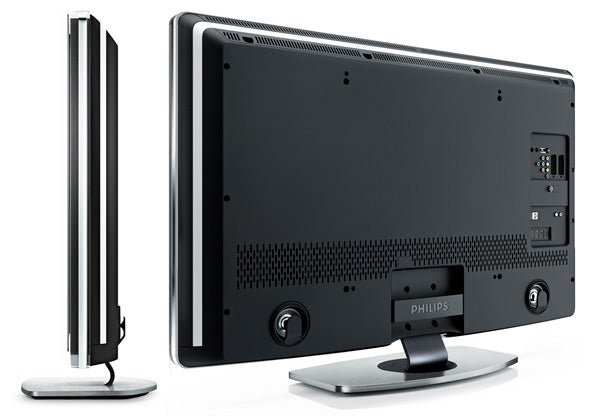
As I’ve noted many times before in Philips TV reviews, the sheer power of Perfect Pixel HD can actually become problematic if you don’t commit to regularly adjusting some of the picture tweaks provided in the voluminous onscreen menus. For instance, the Perfect Natural Motion element of the system can cause distracting processing artefacts with motion-heavy content. So you should turn it down or off when there’s a chance of this cropping up.
Provided you spend time getting the best from it, though, the results achieved by the latest Perfect Pixel HD engine can be nothing short of spectacular, as we’ll see presently.
Before we get into image performance, though, there are still more key specifications we should cover. Starting with the fact that the direct LED engine at the TV’s heart features local dimming, whereby the TV can individually control no less than 224 different LED light clusters behind the screen. This means the set has the potential – to an impressively ‘local’ degree – to have some LED clusters running at full brightness at the same time others are turned almost completely off. 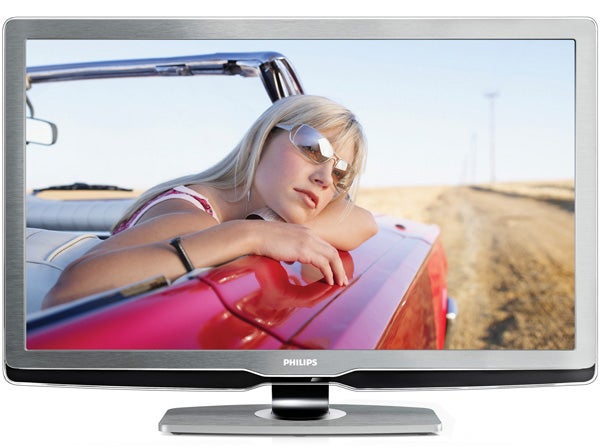
As you might guess, the result of this should be a contrast performance that thrashes the living daylights out of anything a typical, CCFL-lit LCD TV can do. In fact, Philips puts a number of 5,000,000:1 on the 46PFL9704H’s contrast performance, which actually humbles the figures of many plasma TVs, never mind LCD ones. It’s hard not to feel impressed/excited by this contrast ratio, despite the wariness with which all such figures need to be treated.
The final important 46PFL9704H feature to mention is its 200Hz processing. As with Panasonic and LG’s 600Hz systems, the 200Hz label is a touch misleading in that the screen doesn’t actually refresh its image fully 200 times a second. But the Philips combination of 100Hz and a scanning backlight has achieved impressive results in the past, to the extent that we’ve even heard rival manufacturers talking enviously about how well it works.
The only obvious and genuinely slightly painful feature omission – especially given the TV’s cost – is a Freeview HD tuner. But then I feel reasonably confident that anyone considering forking out for a TV as sophisticated and ‘premium’ as the 46PFL9704H will already have either a Freesat HD box or, more likely, Sky HD.
Finally getting into the performance section of the 46PFL9704H’s review, for once I’m going to start by talking about the 46PFL9704H’s audio rather than its pictures. For even though the set is slim and glamorous, it can also produce exceptional amounts of audio power, range and clarity.
How? Via a cunning combination of dome tweeters under the fascia and separate, meaty mid-range/bass drivers on the TV’s rear. Separating the speakers out like this allows the set to overcome the audio problems raised by its slimness, and thus deliver a powerful, well rounded, detailed and punchy audio performance that leaves the audio of every other super-slim TV we’ve heard for dead. We dare say this audio approach doesn’t come cheap, but we still recommend that other slim TV manufacturers try and learn something from it!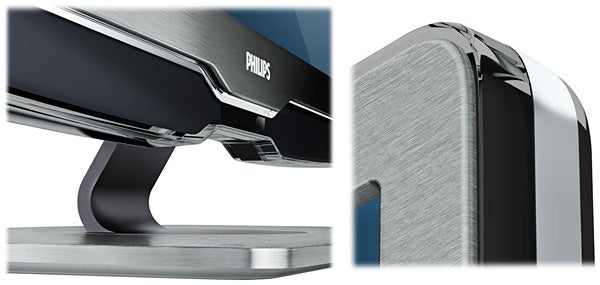
The combination of direct LED backlighting, local dimming and Philips’ ultra-powerful video processing, meanwhile, helps the 46PFL9704H produce what are for my money the best pictures I’ve yet seen from a big-screen LCD TV.
Black levels, for instance, are a sight to behold, achieving a level of depth and richness I’d once doubted an LCD TV could ever deliver. Seriously, I’m talking about a black colour to rival the best the plasma world has to offer.
In fact, the depth of blackness the set can produce is at first almost unnerving, leaving dark parts of pictures appearing too dominant. But in reality this was simply because my amazement at seeing such black levels on an LCD TV was making me stare too much at the dark picture areas. Once I’d finally realised that the 46PFL9704H’s black levels really were that good, I soon became accustomed to the black level response and settled down to noticing the rest of the image too.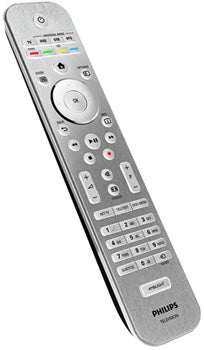
And once I did that, it quickly struck me just how much else there is to discover. For sitting right alongside those inky blacks can often be found ultra-bright, ultra-pure whites of a sort no standard LCD TV and actually precious few plasma TVs can match.
Colours, too, are fearsomely intense, leaving the efforts of almost all rival TVs looking positively washed out by comparison. What’s even more startling about this colour intensity is that it doesn’t lead to over-saturation; in other words, subtle colour shifts and fine details are still visible amid even the most vibrant tones, and the general colour palette somehow still looks believable rather than over-wrought and cartoonish.
The Perfect Pixel HD engine, meanwhile, ensures that the 46PFL9704H nails image clarity. With HD sources, the set reveals the minutest traces of detail and texture, yet provided you’re sensible with the TV’s sharpness adjustments, that detail never starts to look forced or noisy.
Even more exceptional, though, is the way the processing engine ups the sharpness levels of standard definition sources. I honestly can’t think of any other manufacturer who can make standard def look more like, well, high def. And it’s a pleasure to discover that the latest Perfect Pixel HD engine sported by the 46PFL9704H does this upscaling magic without generating as much noise or digital side-effects as previous Philips processing engines.
The sense of extreme sharpness the TV delivers with all sources owes much, too, to the set’s extremely powerful motion processing. In fact, with Perfect Natural Motion at its highest setting and the 200Hz engine engaged, there doesn’t appear to be any sign at all of either the judder or motion blur flaws that LCD technology is supposed to suffer with as a matter of routine. Though actually, I wouldn’t recommend ever running Perfect Natural Motion at its highest level, as this can result in too many processing artefacts. Better to leave it set quite low and suffer a tiny bit of judder.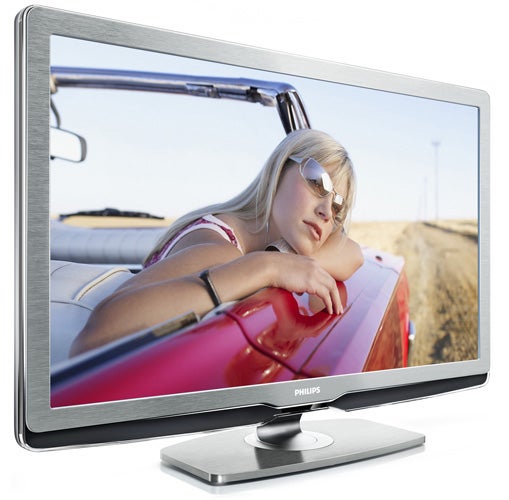
While the 46PFL9704H’s pictures look superb for much more of the time than almost any rival TV I can think of, it still can’t claim to be perfect. For a start, while black levels and colour saturations actually hold up better than most LCD TVs when viewed from an angle, viewing from off-axis can reveal signs of haloing around bright objects – a result, presumably, of the local dimming system.
There’s also a touch less subtle detail visible in dark areas than you get with a really good plasma set (again, no doubt, because of the local dimming). And as we pointed out earlier, it’s actually entirely possible to make pictures look pretty ropey and noisy if you’re not careful with some aspects of the video processing engine.
But while there’s arguably still work for Philips to do in getting its massive picture processing engine to work a little more effectively automatically, thus reducing the burden on the user, overall the simple fact remains that the 46PFL9704H’s pictures can cause so much involuntary drooling that they should probably carry a health warning. Yeuch.
”’Verdict”’
The 46PFL9704H takes Philips’ latest and greatest picture processing engine, attaches it to an uncompromising direct LED lighting system with local dimming, throws in a class-leading audio system and cutting edge Ambilight technology, and winds up being one of my favourite TVs ever. Especially as its 46in screen size provides such a handsomely large forum for Philips’ picture prowess to shine in.
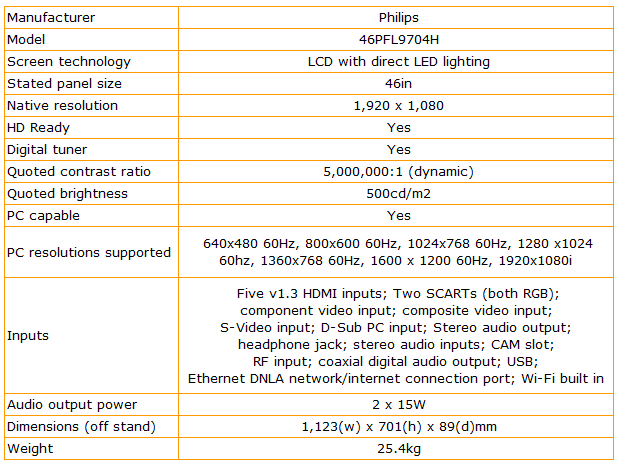
How we test televisions
We test every TV we review thoroughly over an extended period of time. We use industry standard tests to compare features properly. We’ll always tell you what we find. We never, ever, accept money to review a product.
Trusted Score
Score in detail
-
Features 9
-
Value 8
-
Image Quality 10
-
Design 10
-
Sound Quality 9
Features
| Size (Inch) | 46in |
| Display Type | LED |

